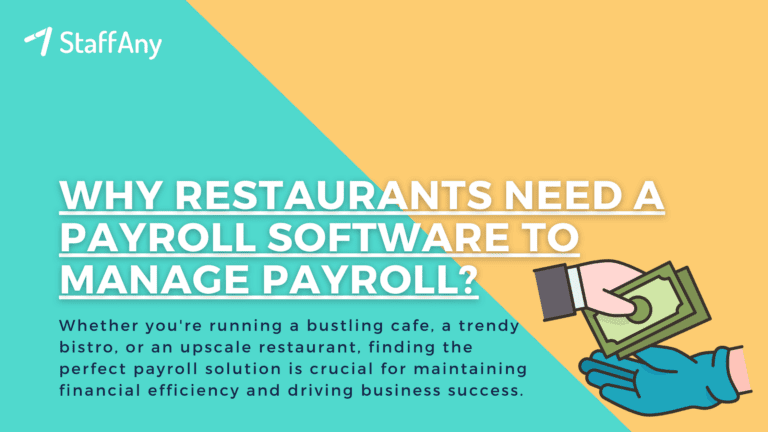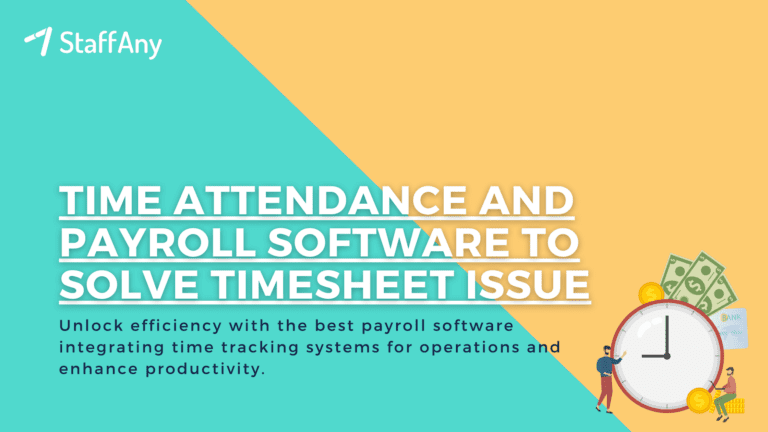Human Resource Planning (HRP) is a vital aspect of business operations that involves forecasting future personnel needs and developing strategies to meet them. It includes determining the number and types of employees needed, identifying skill gaps, and creating a plan to attract, retain, and set the necessary talents.
By effectively implementing HRP, businesses can manage their staff efficiently and adapt to changes in the economy, legislation, or technology. To effectively manage your business’s staffing, it’s essential to understand the importance of HRP and develop strategies to meet your personnel needs.
What Is Human Resource Planning?

Human Resource Planning (HRP) is a vital process for any business that aims to align its workforce with its strategic objectives. It involves forecasting future personnel needs, identifying potential skill gaps, and developing strategies to address them. By effectively implementing HRP, businesses can ensure they have the right number and types of employees with the necessary skills to meet current and future demands. This human resource management also involves creating a plan to attract, retain and set the necessary talents.
One of the key components of hr planning is forecasting the number and types of employees needed in the future. This step involves analysing current and projected business needs, as well as considering external factors such as changes in the economy, legislation, or technology. Once the forecast is complete, businesses can develop strategies to meet those needs, such as recruiting new employees, training existing staff, or outsourcing specific tasks. This allows businesses to proactively address workforce shortages and skill gaps, and position themselves for long-term success.
Read more: The Importance of Relationship Management with Customers
Why Human Resource Planning Matters?

Human Resource Planning brings many benefits to businesses. In this section, we will explore some of the specific benefits that HRP brings to your business.
1. Improved Efficiency
Effective human resource planning helps improve efficiency and is essential for any business that wants to achieve operational excellence. By forecasting future personnel needs and developing strategies to meet them, businesses can ensure they have the right number and types of employees with the necessary skills to meet current and future demands. This leads to increased productivity, better performance and reduced costs.
2. Better Talent Retention
Human resource planning helps your business with employee retention adn employee turnover rate as well. By identifying skill gaps and developing strategies to fill them, businesses can provide their employees with the necessary skills to advance in their careers. This not only helps to reduce turnover but also improves employee satisfaction and engagement. This can help a business to build a talented and motivated workforce that can drive long-term success.
3. Increased Flexibility
Human resource planning can be a powerful tool for increasing the flexibility and competitiveness of your business. By forecasting future human resource needs and developing strategies to meet them, your business can ensure it has the right talents with the necessary skills to adapt to changes in the market, such as new technologies or changes in consumer preferences.
This allows a business to stay agile and responsive to market shifts, giving it a significant advantage over competitors who lack the same level of foresight and strategic manpower planning.
4. Better Financial Planning
Human resource planning can help your business make better financial decisions. You can better predict and plan for human resource budget, such as salaries and benefits for existing employees and hiring costs for attracting new talents. This allows for more informed financial strategic planning and decision making, as the business can more accurately project and allocate resources for staffing needs.
Read more: Understanding Employee Management System and Its Benefits
5. Improved Employee Development
Lastly, human resource planning enables a business to identify potential skill gaps among its current employees and provide opportunities for professional development and growth. By providing your human resources with training, mentoring, and other opportunities for skill-building, a business can not only improve employee satisfaction and retention but also increase the overall skill level of its workforce. This can lead to increased productivity and improved performance, driving the growth and success of the business.
6. Compliance and Risk Management
Effective human resource planning ensures compliance with legal and regulatory requirements related to employment practices, diversity and inclusion, compensation, and employee benefits. It also mitigates risks associated with workforce gaps, skill shortages, or sudden changes in labor market conditions.
7. Organizational Agility
By having a well-planned and adaptable workforce, organizations can respond effectively to changing market conditions, industry disruptions, or growth opportunities. Human resource planning allows organizations to anticipate and address talent gaps, ensuring the availability of the right skills and competencies at the right time.
Overall, human resource planning plays a critical role in aligning the organization’s workforce with its strategic goals, optimizing talent utilization, fostering employee development and engagement, and ensuring long-term organizational success.
Read more: Understanding Manpower Planning and Its Importance in F&B
The Steps of Human Resource Planning Process

Implementing human resource planning involves several steps, from forecasting personnel needs, developing strategies to meet those needs, implementing, and monitoring those strategies. Let’s elaborate:
1. Forecasting Personnel Needs
First, as a human resource planners, you should forecast personnel needs by analysing current and projected business needs, taking into account external factors such as changes in the economy, legislation, or technology. This will help you determine the number and types of employees you will need in the future.
2. Developing Strategies
Once the forecast is complete, you can develop strategies to meet those needs. This can include recruiting new employees, training existing staff, or outsourcing specific tasks. It’s essential to consider the organisation’s overall goals and objectives when developing strategies to ensure that they align with the overall mission and vision of the company.
3. Job Analysis and Job Design
Conducting a detailed job analysis to understand the specific tasks, responsibilities, and qualifications required for each job role within the organization. This information helps in determining the skills and competencies needed for future hires or existing employees to perform effectively. Job design involves structuring and organizing job roles to optimize productivity and align with the organization’s objectives.
4. Implementing and Monitoring
The next step is to implement the strategies developed in the previous step. During the implementation, it’s important to track the progress of these strategies to ensure that they are achieving the desired results. This can include monitoring the recruitment process, employee retention, and performance metrics.
5. Reviewing and Updating
HRP is an ongoing process, and it is vital to review and update strategies as needed. This step may involve adjusting strategies to meet changing business needs or recruiting and retention strategies to address changes in the job market.
Read more: A Comprehensive Guide on Shift Work Schedule Management in the F&B Industry
Conclusion
With effective HR Planning in place, your business can reduce turnover and improve employee satisfaction which ultimately leads to reduced costs associated with the recruitment and training of new staff. Overall, HRP is a critical process for any business looking to promote employee development, improve performance, and drive long-term success.
Manage your resources effectively with StaffAny. As a workforce management solution, StaffAny’s smart timesheets tool can help your business manage cost control with our time clock sidekick that automates rounding, early clock-in prevention, and auto clock-out to help control your budgeted costs.
With StaffAny, staff can see their own work history and improve their performance. Never has the reconciliation of work hours & staff work been made so simple. The transparency of our employee timesheets allows fast rectification of unmatched timesheets. To ensure accuracy, overtime calculations, work performance, and any anomalies are automated and flagged out for your attention.
Aside from helping with human resource planning, your business can improve communication between staff – where they can view their own timesheets, improving trust and eliminating payslip discrepancies. Find out how StaffAny can help with your human resource planning, get in touch with us via whatsapp or start your free trial now!











